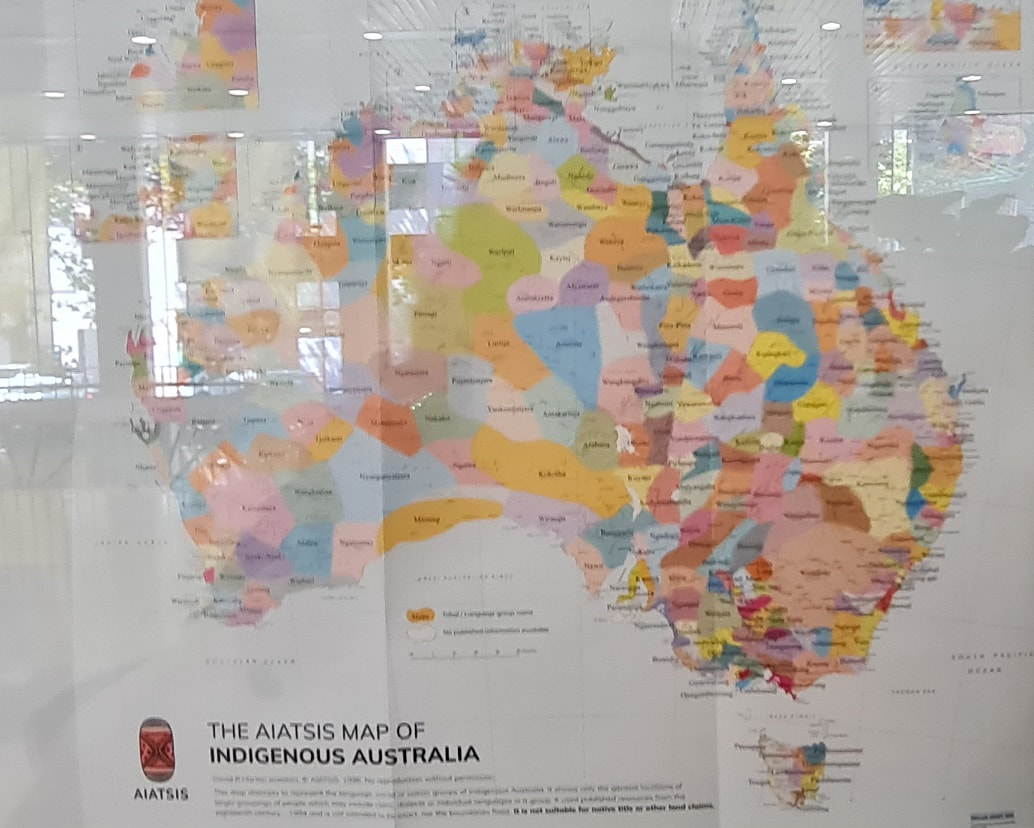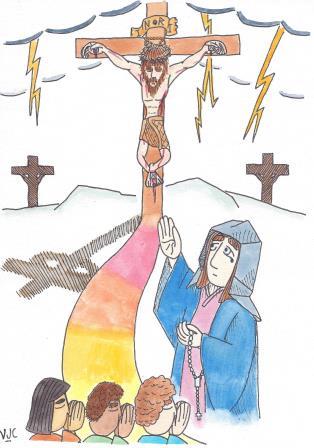The first concern is that it is a top-down decision and hasn’t arisen from the grass roots of the nation, unlike the 1967 referendum vote to include indigenous Australians in population counts which was a grass roots movement with wide support, easy to understand, and easy to ascertain if it has been done properly.
The second concern is that a lot of money is being spent by government to push for the Yes vote. We’ve seen government buses with slogans. We are seeing Australian business corporations also displaying alliance with the Yes vote, as they did for the same sex marriage plebiscite. Previously business corporations had zero interest in the outcome of national decisions. But in this age of so-called virtue signaling, it has become de rigueur. This bothers me because it has a coercive impact.
The third concern is the appeal to emotion rather than to reason. It goes something like this, as a nation we are more aware than ever of the injustices meted out to indigenous Australians throughout our history, and we are grieved about this, and think something should be done. This referendum is a something, therefore we should do it to assuage the guilt levels we feel. No one seems to be asking whether this voice to parliament is the best solution or not.
The fourth concern is that we have a history of well-meaning legislation supposedly put forward to better the lot of our indigenous peoples and actually making their lives worse.
The fifth concern is that the actual legislation to enact the referendum change, should it be voted in, will not be written until after the vote. In effect each of us is signing a blank cheque with unknown consequences. We know that the promises of our politicians aren’t worth much, since we are still waiting for them to enact legislation to protect free speech and religious liberty – which was promised as part of the same sex marriage legislation.
The sixth concern is that the letter of this unknown actual legislation could be significantly different to what the various politicians have been promising that it will be. I’ve seen footage of a politician speaking to one group of people saying that the change will be minimal and then speaking to another group of people and saying that the change will be far more than minimal.
The seventh concern is the wedge this proposed referendum is driving between indigenous Australians and non-indigenous Australians. It seems the antithesis of ‘Australians All Let Us Rejoice’ as we sing in the national anthem. If one was truly cynical you could consider it a diabolical invention to inflame racial hatred in this country. We are already facing derogatory terminology if we dare to question this referendum proposal, and being accused of hurting our indigenous folk because we are yet to be convinced that it is a good thing for them, and for all of us.
The eighth concern is that you don’t normally get politicians, corporate business and media singing from the same hymn sheet unless there is a much bigger agenda afoot; and yes, I am deeply worried that it is a W.E.F. agenda or similar.
Let’s step back and look at the objective situation.
In Australia there are many hundreds of indigenous nations, tribes and cultural groups.
Now some of them are freshwater people, some of them are river people, some of them are salt-water people, some of them are desert people, some of them are river people, some of them are grass plains people, some of them are mountain people, some of them are rain forest people – and I’m sure to have missed some out.
Each of these indigenous nations has a very strong connection to the geographical area of their nation, and deep understanding about how all the landscape, the plants and animals all coexist. What I need you to see is that it is a local relationship and local custodianship. There are all kinds of multi-layered stories to explain geographic formations and animal traits.
Can you begin to see the troubles that could arise if a river person starts making decisions that affect desert people? Or if a rain forest person starts making decisions that affect grass plains people?
Consider that each of these peoples all have different laws, customs, stories and culture, and that some of these things change according to whoever carries leadership or eldership at the time. For example, one elder may have a prohibition about speaking about deceased people for 3 years, and the next elder may have a prohibition about speaking about deceased people for 10 years.
Now consider that many indigenous peoples are not living on their ancestral lands. This is truer in urban areas than in outback areas. I attempted last year to find out if there were any indigenous people with ancestral connection to the area I live in and still living here. I failed to find any. What I did find were indigenous people with connections to the mid north coast of NSW, to the Riverina region of NSW, and to river people of VIC. I discovered that a former local indigenous leader wasn’t from around here either.
What happens to your region if there are no elders with ancestral connections to represent your region in the voice to parliament?
Next consider the problematic definition of who is indigenous and who isn’t. Are you indigenous if you have at least one great-grandparent indigenous (1/8)? Are you indigenous if you can trace any indigenous ancestor back to 1788? When do you stop being indigenous and start being hodge-podge Australian? It certainly matters from a government funding point of view. Does someone who has 1/16 indigenous ancestry have the right to tell someone with two indigenous parents what to do - and how to live their lives?
Believe it or not matters can be even more complicated. We watched a Who Do You Think You Are episode recently about a retired director of an indigenous dance company. Going through his family tree found Australian indigenous, Cook Island ancestry, and Philippine ancestry and more. How many others have such hybrid ancestral connections – and don’t realise it?
What happens if people start identifying with indigenous Australians, even though their ancestry is thoroughly Anglo-Celtic? Do they get government funding as indigenous? Since we are living in the craziness of men identifying as women and vice versa, this is no longer in the region of “la la land”, but a real issue.
It makes far more sense to me that an indigenous elder should have an ex-officio seat at the local government table. That’s where the custodianship is, that’s where the knowledge and commitment is. But it needs to be an indigenous elder with a true ancestral connection to the local government area.
Because of the local focus of indigenous nations within Australia, it makes no sense to me to set up a national body of indigenous to speak to national issues. The concern is that the people interested on serving on such a voice to parliament would be political activists and politicians – unless there is a way to make them hereditary positions. But who is going to say which indigenous bloodlines are more important than other indigenous bloodlines?
What is going to stop political activists from making constitutional challenges to be heard in the high court which could enshrine interpretations at complete odds with the understanding of the people who voted yes to the voice to parliament? How do you protect against people acting in their own interests at odds with the needs of the rest of Australians? How do you protect against people acting for foreign interests at odds with the true needs of Australians?
It all feels like a recipe for chaos, disorder and disunity, with the possibility of pitting one indigenous culture against another one. Chaos, disorder and disunity are at enmity with peace, unity and truth. Shouldn’t we want national decisions that establish peace, unity and truth in our land?
That’s why, unless the structure of the referendum proposal drastically changes for the better, I will be voting No.
.........................................
Below is a printer friendly edited version, 4 x A4 pages,
| a_voice_to_australian_parliament_pdf.pdf |


 RSS Feed
RSS Feed